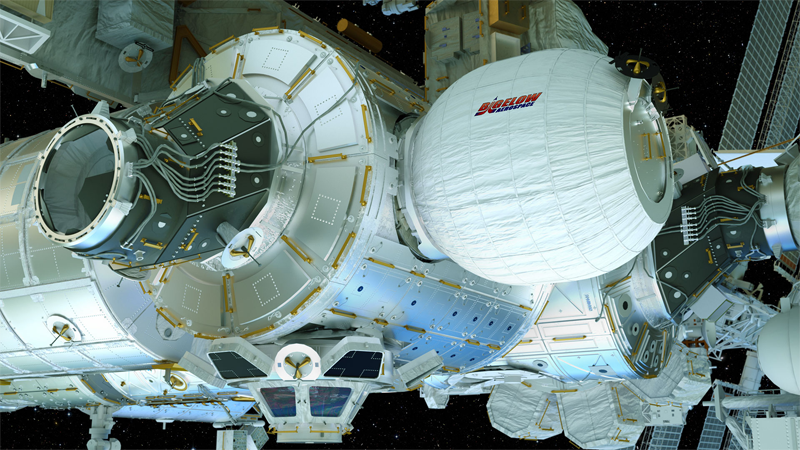


The first astronauts on Mars probably won’t live in a tin can like the International Space Station. Big, heavy structures are expensive to launch, and aren’t great at protecting against the radiation they’d be pummeled with on Mars. Instead, the first Martians might live in something like a pop-up tent.
Bigelow Aerospace designs inflatable space habitats–lightweight modules that ride compacted in the trunk of a spacecraft, then expand to a much larger size in space. In a launch scheduled for April 8, the company is sending one of its modules up to the International Space Station for testing.
The module had previously been scheduled to launch in the fall of 2015, but after SpaceX suffered a rocket explosion in June, its missions to the ISS have been grounded.
Next month, after SpaceX’s Dragon capsule docks with the space station, one of the station’s robotic arms will unload the Bigelow Expandable Activity Module, or BEAM, from the Dragon’s trunk, and then install it to the station itself. Then the module will inflate to about 13 feet long and 10 and a half feet in diameter.
Here’s a video of the unloading process, from Bigelow’s website:

On the ISS, astronauts will monitor BEAM’s pressure, temperature, and ability to deflect radiation and debris. The module will be closed off from the rest of the space station for most of the time, but occasionally astronauts will enter the BEAM to take measurements.
Bigelow has tested other small-scale versions in orbit, unmanned. Genesis I and II launched in 2006 and 2007, respectively, and are still helping the company assess the long-term safety of the design.
The BEAM module launching in April weighs 1,400 pounds. That may sound like a lot, but it beats the space station by a long shot. Whereas BEAM weighs an average of 5.46 pounds per cubic foot of space it provides, the ISS weighs 28.6 pounds per cubic foot.

Bigelow’s design stems from NASA’s TransHab design, which stalled in the 1990s due to budget constraints. It uses a material called Vectran, which is said to be twice as strong as Kevlar. Because the material is flexible, the inflatable habitats are expected to be better than metal at protecting against radiation and micro-meteorite strikes. They’ll absorb hits, rather than shattering on impact or scattering radiation like metal does.
If the BEAM module performs well on the ISS, Bigelow hopes to launch a larger version within the next few years. Their pill-shaped BA-330 will be 45 feet long and 22 feet in diameter, and the modules can link together to form an even larger habitat.
The company envisions using the habitats to build private space stations and space hotels in orbit. And eventually, the inflatable domiciles could provide a home for astronauts colonizing the moon and Mars. BEAM us up, Bigelow!
